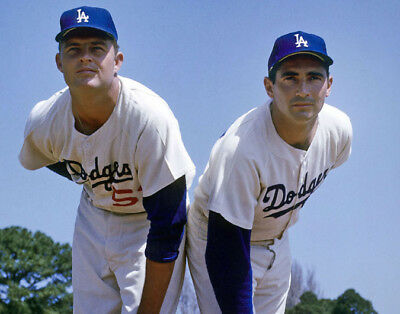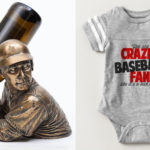Bring Back the Old Doubleheader
 The old days of baseball. The scheduled Sunday afternoon doubleheader. Or the midweek twi-night doubleheader that usually started around 4 pm. The timeless pleasure of seemingly endless baseball, or the doubleheader.
The old days of baseball. The scheduled Sunday afternoon doubleheader. Or the midweek twi-night doubleheader that usually started around 4 pm. The timeless pleasure of seemingly endless baseball, or the doubleheader.
The Beauty of Traditional Doubleheaders
The late afternoon twi-nighter that ran into the evening felt timeless. As if there were no time limitations and the games would outlive the color of the sky. Beginning as they did with a blazing lemon disk painting the azure blue slightly pink as the first game began, it was only a matter of time before lilac tinted the game. Then, with each passing inning, the sky bent into violet before the red of purple succumbed to deeper blues and the end of the first game. As the second game approached, that blue gradually blended into a tonality of black before the sky accepted the inevitability of night and the next round of nine innings.
Meanwhile, before each game, the field was manicured, and the grass and dirt softened with sprays of water that glistened first in the sun, and then later under the banks of white lights, especially before the second game, as the stadium slipped into daytime at nighttime.
Soon enough, the umpires emerged from their dressing rooms and gathered at home plate where they talked and pointed at markers around the field. After a few minutes the managers–or a coach, or sometimes even a player–would bring out the lineup card, one for the home plate umpire and one for the opposition manager. They circled home plate as they chattered for a few minutes. And laughed. And pointed. And gesticulated.
Which meant the game would soon start.
And then the men in uniforms returned to their dugouts. The umpires remained together a few more moments, continued their refrain as the home team sprinted onto the field and took their positions. Only then did the umpires trundle to their respective bases.
Since the national anthem had already been played before game one, there was no anthem before the second game.
The players threw the ball around the infield. Sometimes the pitcher strolled in from the bullpen with the pitching coach beside him, his warm-up jacket slung over his shoulder with a damp white towel that contrasted with the jacket. The pitcher took the mound and began his warm-up throws.
The opposing lead-off hitter approached home plate, twirled his body around as the bat or bats he swung wrapped around him with every circular motion. Minutes later the pitcher finished his warm-ups. The umpire howled, “Play Ball!”
The batter stepped into the chalked batter’s box, kicked dirt around, dug in, got comfortable and faced the pitcher. Swung his bat several times. In the process, the beautiful white lines of the batter’s box became blurred, lost their crisp geometric plane, and bled into the brown dirt. Even before the first pitch, the perfect symmetry of the batter’s box was blemished. But that’s baseball.
There’s nothing unusual about this picture. It’s the way most games start. But there was something special about the imprecise outline of a doubleheader. The way fans moved about the stadium without purpose between games. The way they waited. The way they enjoyed the informal ruckus on the field. The way a marching band briefly played music between games on the outfield grass. The way a doubleheader could harken back to the earliest days of amateur baseball when fans watched the games in splendor as local musicians spread cheer across the field as if sanctifying the ritual for all time ahead.
While on the sidelines before game two, players threw balls from home plate into the outfield in foul territory parallel to the dugouts as the field was manicured. The grounds crew raking the dirt, watering the grass and painting the chalked lines. Vendors marched through the stands selling beer, frankfurters, peanuts, popcorn and cotton candy, as much as they could to fans hungry for more of the feel of baseball in their guts.
And then, all was ready. A pitcher glared into the catcher, received a sign, wound up and delivered the first pitch.
The game of baseball had begun again. That did not stop the vendors from hawking the tastes of the game.
Last Week’s “Doubleheader”
The Yankees beat the Baltimore Orioles in two separate games, spaced apart by several hours so every fan had to leave the stadium and pay to re-enter if they wished to see the second game. This is the epitome of what’s wrong in today’s game. It’s a doubleheader but it’s really two separate games played the same day.
This is the way two games in one day are now played. It’s no longer a scheduled doubleheader. The Yankees-Orioles doubleheader was the result of two consecutive rainouts. And the day of the third scheduled game of the series, MLB and the Yankees placed an extra game before the regularly scheduled third game. So only one game has to be made up in one of the other Baltimore trips to Yankee Stadium later in the season.
Sorry, But I Miss …
… the laziness of the downtime between games inside the stadium. Staring at the field. At other people. Strolling the concourse inside the stadium. Finding another vantage point to see the field. Another way to appreciate the different sight lines. From right field or third base. Behind the plate. All the while waiting for the players to re-emerge from the clubhouse as the taste of a hot dog with mustard and sauerkraut lingered on my tastebuds. An icy soda to wash it down. Later in life, I enjoyed smoking a cigar at a stadium between games.
Cigars and Baseball
That was a great way to remember my grandfather; the smell of cigar smoke. He always smoked cigars at baseball games when I was a kid. And even today, the smell of cigar smoke brings back memories of players long retired, as well as grandfather.
Like the Mets emerging from the clubhouse in dead center field at the Polo Grounds, 483 feet away from home plate. Slowly plodding to their dugout, the vivid red and white Rheingold Beer sign on the scoreboard behind them.
When I became old enough to go to games myself with friends, we took the local bus and walked the last mile to Shea Stadium. In June 1965, I saw the Los Angeles Dodgers play the Mets. Sandy Koufax started the first game and won 2-1, while Don Drysdale started the nightcap and lost 3-2. And no, I did not smoke a cigar, not yet. But the games were close and exciting, and the fans were relentless in support of their Mets. Despite that, Koufax was such a magician on the mound the Mets had no chance. Drysdale was almost as good.
Only a few doubleheaders were scheduled each year. So they all had the potential to be special. Another one that stands out pitted the Mets against the Pittsburgh Pirates in the midst of the pennant race in the National League East in September 1969. The Mets won both ends of the twin-bill, 1-0, on runs driven in by their starting pitchers Don Cardwell and Jerry Koosman. I listened to both games on a transistor radio hidden in my pocket with earphones running under my shirt up my neck and into my ears. The crackling sound of the game made everything I felt and touched that afternoon golden. As if the Mets success was my success. In a way it was. And it lasted most of the day into the evening. This feeling that I was part of something special could have been because everything else seemed so second fiddle.
Only Baseball Plays Two
That’s right. What other sport would have the nerve to play two games in one day? Two games in one week once a season is enough for football. Back-to-back games in basketball and hockey, usually home and home series are considered physically challenging. In baseball, 33 games the next 33 days are considered physically demanding. Not one day off in a month is unusual, but part of the baseball season.
But today’s baseball has robbed fans of the scheduled doubleheader. Robbed fans of the illusion of the timeless pleasure of seemingly endless baseball. For those of us who love the game, nothing could be better. Will it ever return?

























